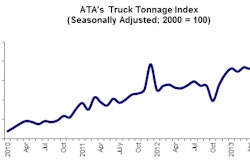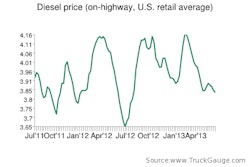
Highway Subcommittee Chairman Thomas Petri said trucking entities have told him “a one-size-fits-all approach won’t provide the flexibility some companies need to take the appropriate rest breaks.”
The Wisconsin Republican noted examples of the issue with the HOS rule that will become effective July 1. A driver resting undisturbed in a chair while waiting for loading or unloading is technically on-duty. Truckers have asked why that time cannot count toward the 30-minute break requirement, he said.
Mark Savage, president of the Commercial Vehicle Safety Alliance, said roadside inspections are a proactive program while compliance reviews are an after-the fact review. ”While the hours-of-service regulations are designed to help the driver obtain quality rest, each of the new rules can be easily disguised or falsified,” Savage said.
Additional enforcement tools are needed, including requiring electronic on-board recorders and for supporting documents to be kept in the vehicle. Until these are mandatory, “roadside enforcement’s job will continue to be challenging and those who seek to break the rules will have more opportunity to do so,” he said.
Steve Williams, head of Maverick USA, testified for the American Trucking Associations. An illustration of the “arbitrary and capricious” nature of the Federal Motor Carrier Safety Administration’s rule change is its new restart restrictions, purported to reduce driver fatigue.
The agency relied on a pre-2003 large truck crash study, which predated the 2003 hours rule changes that addressed fatigue. This study obviously could not show any effect of current hours rules on on fatigue conditions, Williams said.
Owner-operator Edward Stocklin, owner of Stocklin Trucking, told the committee that the agency overlooked opportunity to provide flexibility in balancing a trucker’s work day. Testifying on behalf of the Owner-Operator Independent Drivers Association, he said truckers have many situations beyond their control, such as being detained by shippers or traffic problems.
“Of greatest impact to truckers, the final rule adds new restrictions onto the 34-hour restart period that will significantly reduce the flexibility provided to truckers under current HOS rules,” Stocklin said.
Joan Claybrook, representing the Advocates for Highway and Auto Safety, testified the hours rule “is substantially similar to the two prior HOS rules which were struck down twice by a federal court.”
The 2011 final rule takes steps toward improving driver fatigue, but “overall falls short of making the necessary improvements for safety that are needed to reduce the annual toll of truck-involved crash deaths and injuries as outlined by the court,” she said.
FMCSA Administrator Anne Ferro defended the rule and acknowledged some congressional representatives and stakeholders want its start date postponed. The agency has twice rejected petitions to delay implementation until 90 days following a ruling from a federal appeals court over the ATA’s challenge of the regulation.
“The agency continues to believe it is inappropriate to sacrifice several months of safety benefits from the timely implementation of the rule,” Ferro said. The requests lacked “adequate support” for the delays, she added.










